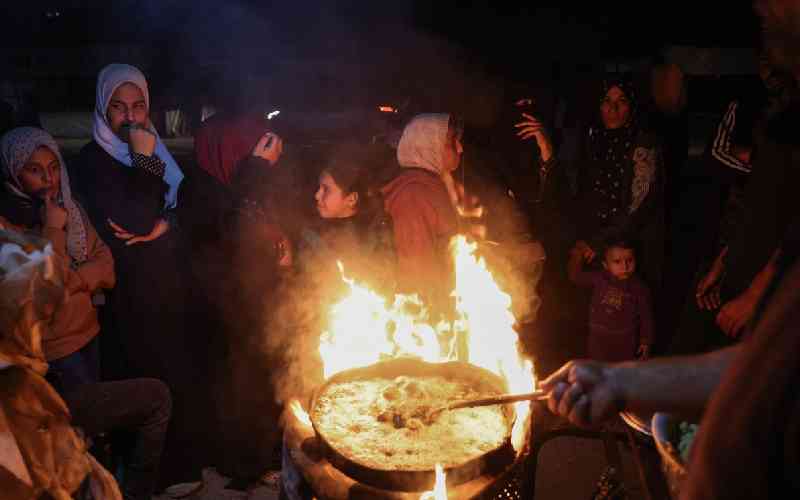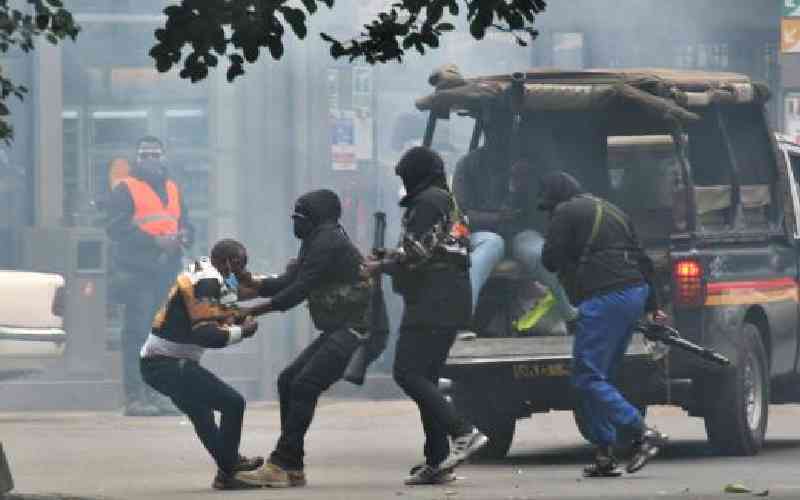By Peter Thatiah
To many, cartoonists are a happy-go-lucky lot who make the clever and powerful look foolish. In their world, there are no untouchables. The high and mighty just need to make one false step to appear on their sketchpad.
Yet a cartoonist remains in the background while bringing others into focus. And because they rarely use their real names, they are faceless.
Michael Munene, 23, a cartoonist with the Standard Group, cannot imagine doing anything else. To him, the craft is a way of life.
Cutting his teeth in an industry dominated by veterans such as Maddo, Gado, Kham, Stanno, Igah, Gammz and Kham, Munene is probably the face of a new generation of caricaturists.
So, how do the politicians take his unbridled silent humour?
"I do not expect to be congratulated by any politician in the course of doing this job. In fact, the more blunders they make, the more exciting my work becomes," he says jokingly.
He has been called names by politicians who feel slighted by his works.
"One (Communications Minister Samuel Poghisio) even called me a devil worshipper after I drew a caricature of him resembling a snake," says Munene.
Others who make it to his sketchpad are heavy-handed security officials, uncouth matatu crew, sly religious leaders, philandering husbands, corrupt government officials, bratty youths and semi-nude women.
Important messages
Anything that is out of line, he says, is good for his job.
As he observes, cartoons are not only meant to entertain, they pass important messages.
"For this to happen, cartoons must be made interesting to catch the reader’s eye. Telling a thousand words in a single sketch is the challenge for every cartoon artist," he says.
But what does it take to be a cartoonist?
Stay informed. Subscribe to our newsletter
"I have been sketching for as long as I can remember. I think I was sketching even while I was in nursery school. The only thing that I really had passion for during my whole school life was sketching and painting. This comes naturally to those who love it. The trick is to practice and keep doing it. If you don’t like it, don’t do it. If you love it, do it even if it’s for free."
The first time Munene’s skills got recognition was when he won a school logo drawing competition at Kahuho Secondary School, Kikuyu.
Before that, he had to persevere rebuttals and punishment from teachers who thought he was wasting time.
"One day I was heavily punished for sketching a cow on the classroom chalk board."
Unlike many budding artists who have to wait long before gaining foothold in the industry, Munene did not.
"I left school and went straight to the newsroom to sketch cartoons for The Standard. I did not go to any art college. It’s just the thing I wanted to do and my stint as a published cartoon artist is simply a continuation of what I have been doing since childhood. I have never done any other job in my life," he says.
For Munene, his career in the newsroom was cut out from the start. "In 2002, while in high school, I submitted my work in a creative writing competition for secondary schools organised by the Nation Media Group and I emerged top nationally. Soon after high school in 2006, I submitted another batch of my work to Haki ya Kalamu Cartoon Competition organised by KATUNI, Ford Foundation and The Standard Group and became number one again. Besides the award, I was recruited by The Standard," says Munene.
But why are there few women cartoonists in the industry?
"Many girls have talent but it’s unfortunate the society has taught them not to engage in anything comic," he says.
To thrive in the industry, Munene believes a practitioner must observe certain dos and don’ts.
"I used to do at least one strip before going to bed and I think this is the best way to sharpen creativity. Never trace someone else’s sketches or pictures because this will kill your creativity. For budding cartoonists, never shy away from seeking help and ideas from established artists," he notes.
His mission is to become the premier cartoonist in the same line with his role models such as James Kamawira (Kham), Paul Kelemba (Maddo), Stanislus Olonde (Stano), Paul Mwampembwa (Gaddo), Eric Ngammau (Gammz) and Samuel Muigai (Igah).
More importantly, he envisions inspiring other upcoming cartoonists to enhance their skills and get published.
Munene, who also paints wildlife, hopes to venture into animation in future.
And if there is any teenager out there who believes he or she has what it takes to pursue this career, Munene is willing to look at your work and share ideas.
 The Standard Group Plc is a
multi-media organization with investments in media platforms spanning newspaper
print operations, television, radio broadcasting, digital and online services. The
Standard Group is recognized as a leading multi-media house in Kenya with a key
influence in matters of national and international interest.
The Standard Group Plc is a
multi-media organization with investments in media platforms spanning newspaper
print operations, television, radio broadcasting, digital and online services. The
Standard Group is recognized as a leading multi-media house in Kenya with a key
influence in matters of national and international interest.
 The Standard Group Plc is a
multi-media organization with investments in media platforms spanning newspaper
print operations, television, radio broadcasting, digital and online services. The
Standard Group is recognized as a leading multi-media house in Kenya with a key
influence in matters of national and international interest.
The Standard Group Plc is a
multi-media organization with investments in media platforms spanning newspaper
print operations, television, radio broadcasting, digital and online services. The
Standard Group is recognized as a leading multi-media house in Kenya with a key
influence in matters of national and international interest.





